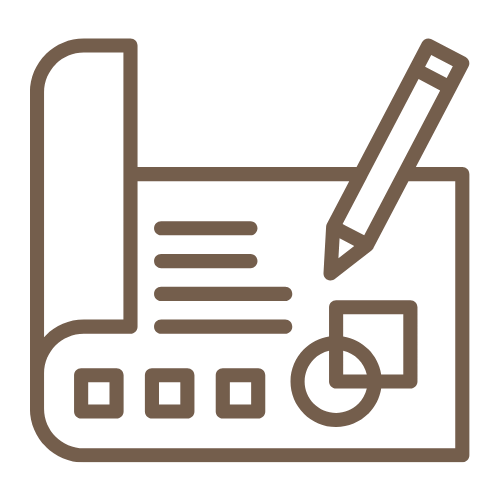Excitement About Bagley Risk Management
Wiki Article
Professional Guidance on Danger Analysis and LRP Insurance Solutions

The Importance of Risk Assessment
Reliable threat evaluation is basic in the decision-making procedure of any type of company, assisting strategic planning and source allocation. By systematically recognizing, evaluating, and prioritizing possible threats, organizations can anticipate difficulties, profit from opportunities, and make informed choices to achieve their goals. Danger evaluation enables companies to proactively address susceptabilities, minimize threats, and enhance their danger monitoring methods.One of the essential benefits of threat assessment is its role in enhancing operational effectiveness. By recognizing the potential risks that can affect numerous elements of business, companies can improve procedures, allocate resources extra properly, and decrease the probability of costly disturbances. Furthermore, danger assessment allows business to abide by governing requirements, protect their credibility, and construct count on with stakeholders.
Understanding Possible Losses
To realize the influence of threat assessment, it is crucial to understand the possible losses that could significantly impact a company's procedures and economic security. Potential losses can emerge from various resources, consisting of all-natural disasters, financial recessions, functional failings, regulative adjustments, and cybersecurity breaches. These losses can result in straight costs such as residential property damages, lawful expenses, and fines, as well as indirect costs like reputational damages and loss of market share.Recognizing potential losses includes performing a detailed evaluation of the dangers that could materialize and estimating the monetary influence they might carry the company. By evaluating these prospective losses, services can focus on danger mitigation efforts and allot resources efficiently. In addition, a thorough understanding of possible losses allows organizations to make enlightened choices when picking threat management approaches, such as acquiring insurance policy coverage or applying threat control actions. Bagley Risk Management.
Essentially, by identifying and comprehending prospective losses, companies can proactively handle threats and secure their long-lasting sustainability and success.
Duty of LRP Insurance Coverage Solutions
The combination of LRP insurance policy solutions within an organization's threat administration structure boosts durability and fortifies monetary security versus unpredicted hardships. LRP, or Loss Healing Product, insurance solutions play a vital function in reducing the impact of prospective losses by giving monetary security and support in times of crisis. These insurance policy options are tailored to meet the certain demands of businesses, using protection for numerous risks such as home damages, business disturbance, liability claims, and much more.By moving the economic danger to an insurance coverage service provider, services can concentrate on their core operations with greater tranquility of mind, understanding that they are protected versus considerable financial losses. In addition, LRP insurance coverage solutions can enhance an organization's danger management approach by supplementing existing danger mitigation actions and making certain extensive protection throughout all areas of prospective susceptability.
Identifying Secret Threats
In the process of threat evaluation, a critical action involves determining key threats that have the potential to influence a company's procedures and financial stability. Identifying key threats needs an extensive analysis of inner and outside elements that can position risks to the company's objectives. Inner risks may consist of functional ineffectiveness, conformity issues, or personnel obstacles, while external dangers might encompass economic slumps, governing changes, or natural catastrophes.
Furthermore, essential dangers need to be on a regular basis reviewed and updated to straighten with the vibrant organization environment. This proactive technique makes it possible for companies to stay ahead of potential dangers and secure their lasting success.
Picking the Right Coverage
Having determined the crucial dangers that can impact an organization's operations and monetary stability, the next vital action involves very carefully choosing the ideal protection to successfully take care of and alleviate these dangers. Companies require to consider their certain danger exposure, financial capabilities, and critical purposes when it comes to choosing the best coverage. It is important to conduct an extensive assessment of the available insurance policy alternatives to make certain that the picked protection aligns with the company's threat monitoring goals.
Organizations ought to function closely with knowledgeable insurance professionals to analyze their danger accounts and identify one of the most ideal insurance products to resolve their demands. Tailoring insurance protection to specific threats can help enhance defense while minimizing unneeded prices. Additionally, organizations must review policy terms and problems thoroughly to recognize the extent of protection supplied and any kind of possible exclusions that may affect their threat reduction strategies.
Conclusion
In verdict, risk assessment is crucial in determining possible losses and selecting the right LRP insurance services. Expert assistance can assist browse the complexities of risk analysis and insurance solutions, offering services with the needed tools to effectively manage and alleviate risks.Specialist support plays a pivotal duty in this procedure, providing beneficial understandings into determining and assessing threats, as well as tactically Read Full Report picking proper insurance protection customized to alleviate those dangers efficiently. A comprehensive understanding of possible losses makes it possible for organizations to make enlightened decisions try this when selecting danger management approaches, such as buying insurance policy coverage or executing risk control actions.

Report this wiki page